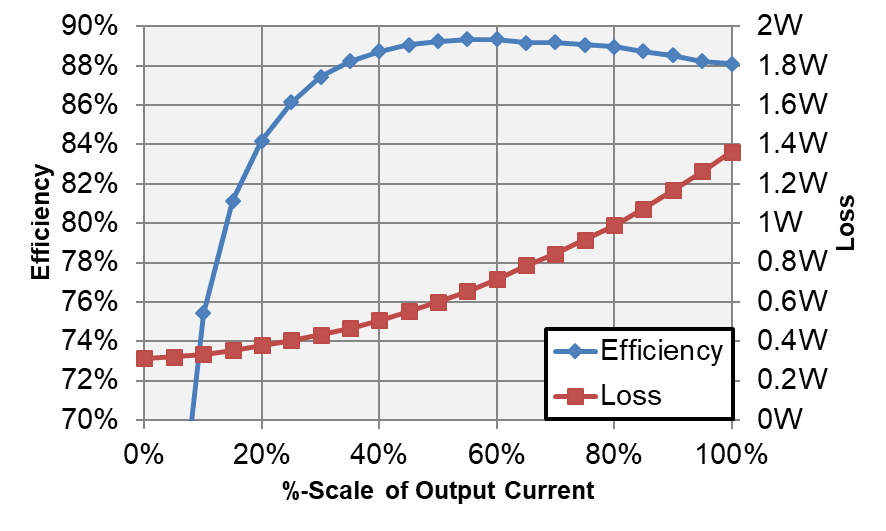TIDT289 July 2022
2.1 Efficiency Graphs
Output current were raised simultaneously for Output Voltage 1 (1.1 V) and Output Voltage 2 (3.3 V). Output Voltage 3 and Output Voltage 4 (= both LDOs) were left open with no load.
 Figure 2-1 Efficiency and Loss vs
Percentage of Output Current
Figure 2-1 Efficiency and Loss vs
Percentage of Output Current